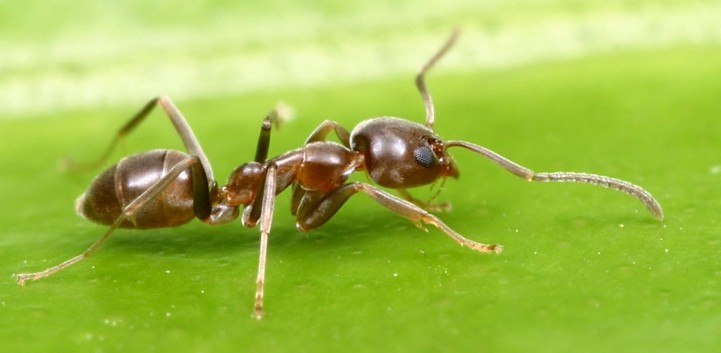Florida carpenter ant
(Camponotus floridanus)

Description
Camponotus floridanus, or Florida carpenter ant, is a species of ant in the genus Camponotus. First described as Formica floridana by Buckley in 1866, the species was moved to Camponotus by Mayr in 1886. The ant is widespread in Florida and occurs as far north as North Carolina and as far west as Mississippi. Camponotus floridanus is one of the most familiar ant species in Florida owing both to its large size and conspicuous coloration. Workers and queens are bicolored, having a reddish-orange head and a bright to dullish orange colored mesosoma and legs, contrasted sharply by a deep black gaster. Male alates of this species are more concolorous, primarily ranging in the rusty to cider oranges. C. floridanus can be distinguished from its visually similar, but smaller relative Camponotus tortuganus by its wider than long head, smaller but stockier legs relative to body size and overall stouter build. Queens on average vary 14–16 mm in length, and the highly polymorphic workers can potentially attain similar lengths, with the largest majors reaching 11–13 mm. Minors and mediae are typically around 4–9 mm. These ants are highly aggressive and fast moving, being quick to swarm any disturbance to their nest. Workers are relentless as they attack, searching meticulously for weaknesses in the skin and targeting vulnerable areas such as the skin creases or the nail cuticles. Major workers can deliver particularly devastating bites as their mandibles more readily pierce the skin, into which they may then spray noxious formic acid. The unusual aggression of this Camponotus species may be an adaptation in response to its nesting habits, as they commonly inhabit extensively rotted deadwood that can easily be broken apart by hand. Outside of deadwood, colonies may be found nesting underground within the base of a living tree or inside tree cavities. Even artificial structures such as hollow poles or fencing may be taken residence. Colonies prefer shaded areas in which to nest, such as in dense woodlands, though any area with many trees that provide adequate shade is potential suitable habitat. Floridanus is readily tolerant of disturbed areas of human habitation, making them a common sight in the densely populated suburbs of Florida. In certain areas these ants can be quite populous and during mating flights the winged individuals numerous, leading to concerned property owners finding them on the walls of stores, buildings, and homes.
Taxonomic tree:







